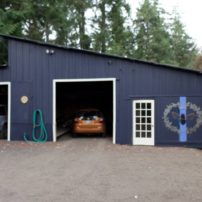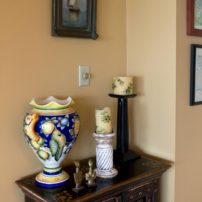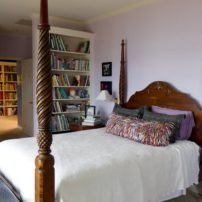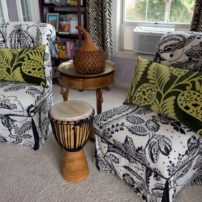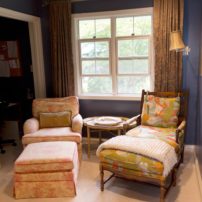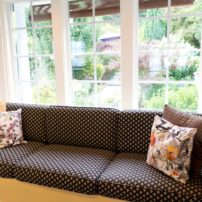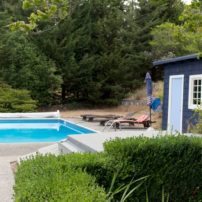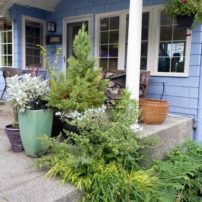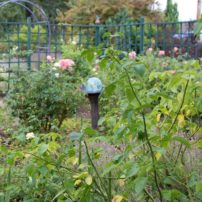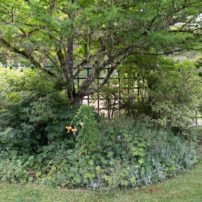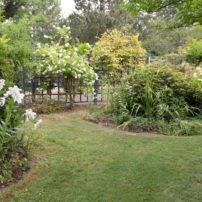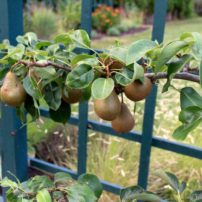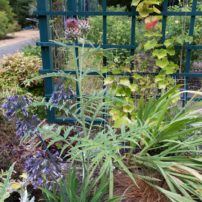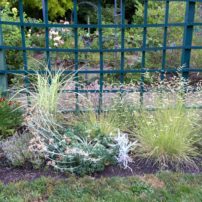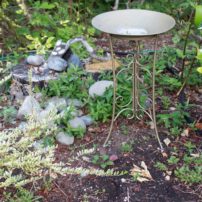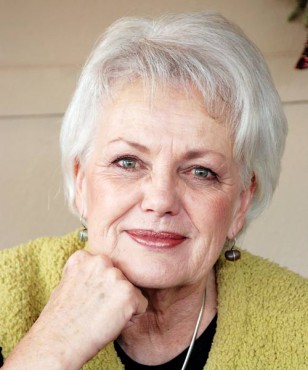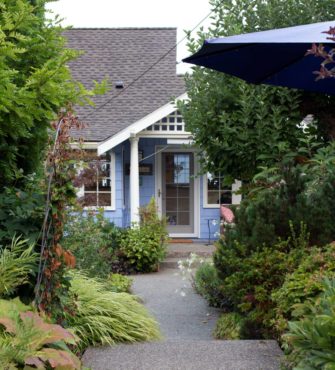 In 1975, an almost derelict cottage overlooking Case Inlet sat overgrown with blackberry brambles. The previous owner, who was Judi Cleghorn’s uncle, had died, and when the estate was settled, Cleghorn and her husband, Rick Gudmunson, made arrangements to buy the little house.
In 1975, an almost derelict cottage overlooking Case Inlet sat overgrown with blackberry brambles. The previous owner, who was Judi Cleghorn’s uncle, had died, and when the estate was settled, Cleghorn and her husband, Rick Gudmunson, made arrangements to buy the little house.
The young couple had been house-hunting, and as Cleghorn’s parents lived on the adjoining property next door, buying the cottage on the Key Peninsula seemed a good fit. At that time, Gudmunson and Cleghorn were both teaching in Clover Park, and even though the daily commute was daunting, they loved the adventure and opportunity of making the cottage their own.
The building was sound; the young couple and their parents set about scrubbing and painting and doing whatever was necessary to make it livable. The two-bedroom, 800-square-foot cottage had a 180-degree view of the water, Herron Island and the Olympic Mountains. It also had a basement with a dirt floor and the vestiges of an early-farm garden with lilacs, beauty bush, flowering quince and fruit trees.
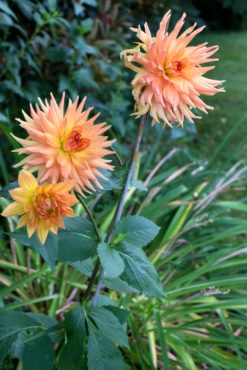 Sitting on 2 acres, the property had been a working farm with raspberries, a large vegetable garden and chickens. There were no animals on the property when Cleghorn and Gudmunson moved in, but over the years, they raised pigs, cattle, rabbits, chickens and at one point a horse, along with a variety of cats and dogs.
Sitting on 2 acres, the property had been a working farm with raspberries, a large vegetable garden and chickens. There were no animals on the property when Cleghorn and Gudmunson moved in, but over the years, they raised pigs, cattle, rabbits, chickens and at one point a horse, along with a variety of cats and dogs.
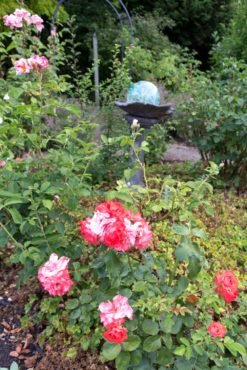 The young couple managed to find teaching jobs closer to home, and eventually, as time and money allowed, they began a series of remodels that have resulted in the cozy, lovely home it is today.
The young couple managed to find teaching jobs closer to home, and eventually, as time and money allowed, they began a series of remodels that have resulted in the cozy, lovely home it is today.
The necessities were handled first — a new roof and new wiring, plumbing and heating. Cleghorn laughs as she says, “I think there have been seven or eight remodels over time.”
The basement was finished in 1982, resulting in the addition of two bedrooms; a large, luxurious bathroom; a workout room; and laundry and storage facility. Later, the kitchen was bumped out and an original bedroom became the dining room, while the other was converted to what is now the snug library and master closet.
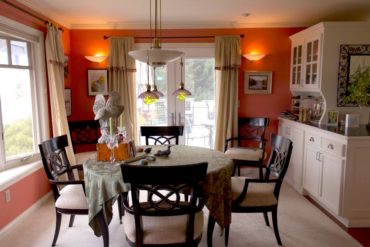 Decks were added, and in 1991, a master wing with large bath and windows to catch the ever-changing view completed the major changes to the house. Since that time, the kitchen has been updated with the installation of upgraded stainless appliances, including and undercounter microwave/convection oven, gleaming black-quartz countertops and custom cabinetry.
Decks were added, and in 1991, a master wing with large bath and windows to catch the ever-changing view completed the major changes to the house. Since that time, the kitchen has been updated with the installation of upgraded stainless appliances, including and undercounter microwave/convection oven, gleaming black-quartz countertops and custom cabinetry.
The original building dates to 1917, creating continual maintenance tasks. Recently, the large living room windows overlooking Case Inlet were replaced. The couple’s daughter was married in the garden last August, and in preparation, the home was painted and an original art mural on the barn door was added.
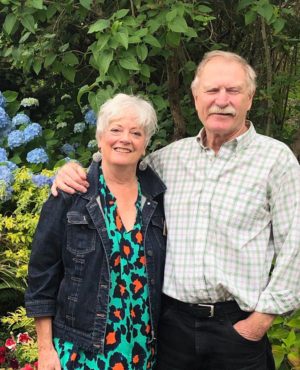
Cleghorn has done all the designing for the renovations herself, and credits Terry Lay of Tacoma for most of the early major-construction work, and DH Jones Construction for ongoing maintenance and repairs.
In between remodels, Cleghorn and Gudmunson raised two children; looked after Cleghorn’s mother, who was aging and eventually suffering some health issues; and maintained their personal interests and hobbies.
Cleghorn wanted a hobby that would keep her close to home and she became a highly knowledgeable gardener. She studied plants that would thrive on her property and could be incorporated into the historical garden already existing on the site. When the in-ground swimming pool and hot tub were added in 1987, she established a mixed perennial border, which she incorporated into the existing native trees that separated the property from the lot next door. There are still remnants of that border in place, although it is not as actively tended due to the problem of deer that regularly dine on anything growing there.
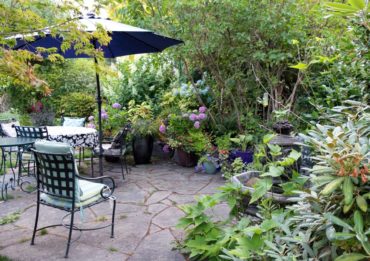 The most serious approach to the garden came with the establishment of an extensive arboretum that borders the road. Cleghorn became a plant collector, delighting in bringing in multiple specimens of shrubs and trees, along with perennials to complement them. She established plant islands in the arboretum, as well as a rose and lavender garden.
The most serious approach to the garden came with the establishment of an extensive arboretum that borders the road. Cleghorn became a plant collector, delighting in bringing in multiple specimens of shrubs and trees, along with perennials to complement them. She established plant islands in the arboretum, as well as a rose and lavender garden.
For years, the couple tended a vegetable garden and raspberry patch. The only lawn is a strip on one side of the drive that serves as a croquet court in summer and is afforded the perfect setting for over 100 guest chairs and wedding altar.
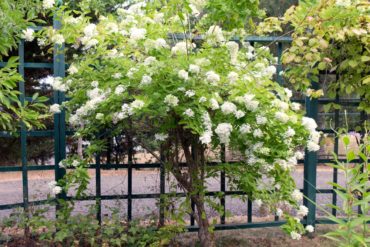 As deer are ubiquitous garden pests on the Key Peninsula, it was necessary to find a way to fence them out. Cleghorn is a creative designer in her own right and gains inspiration from many sources. A favorite book in her library is “Trellis” by Jamie Garnock, and she is also fond of works by Ann Lovejoy.
As deer are ubiquitous garden pests on the Key Peninsula, it was necessary to find a way to fence them out. Cleghorn is a creative designer in her own right and gains inspiration from many sources. A favorite book in her library is “Trellis” by Jamie Garnock, and she is also fond of works by Ann Lovejoy.
Studying how other gardeners had approached garden fences, she found an idea that would work, and designed her fence. Gudmunson, an innovative craftsman, bought materials, painted them a traditional garden green, and with his son, constructed the 7-foot fence that still stands today.
“Our son wanted an electric guitar and amplifier,” Gudmunson recalls. “So I told him, ‘We have to build this fence. You help me and when it is finished, we’ll go shopping for the guitar.'”
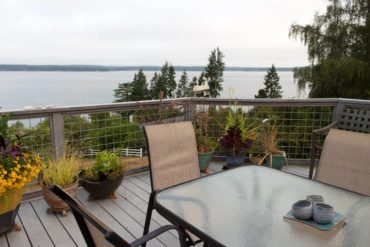 The fence gives definition to the garden, allows air to pass freely through to the plants, keeps out large animals, and offers a mystique as to what lies beyond.
The fence gives definition to the garden, allows air to pass freely through to the plants, keeps out large animals, and offers a mystique as to what lies beyond.
Over the years as the trees in the arboretum have matured, the area has become very shady. Many of the perennials originally planted there have declined and have been replaced with more shade-tolerant plants. Some plants now require constant pruning to keep them in check, and occasionally require removal if they have totally outgrown their space.
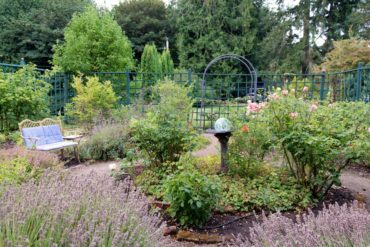 Cleghorn is the consummate plant collector, acquiring about 60 rose bushes and a dozen or so different species each of hydrangea, rhododendron and lavender. She likes to allow plants to take their natural shape and form. She loves the interplay of light and shadow, and the way plants change over the seasons.
Cleghorn is the consummate plant collector, acquiring about 60 rose bushes and a dozen or so different species each of hydrangea, rhododendron and lavender. She likes to allow plants to take their natural shape and form. She loves the interplay of light and shadow, and the way plants change over the seasons.
“Our goal in establishing the arboretum was to create a space that would draw us in each season of the year,” Cleghorn said. “Nature is always changing; there is always something new to see.”
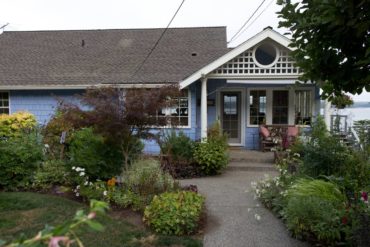 She doesn’t have a particularly favorite plant. As each one flushes in the spring and blooms, or turns a vibrant fall color, or reveals its structure and texture in the winter, it becomes a favorite for a while until replaced by another. This is the mindset of the true plant collector and lover of nature.
She doesn’t have a particularly favorite plant. As each one flushes in the spring and blooms, or turns a vibrant fall color, or reveals its structure and texture in the winter, it becomes a favorite for a while until replaced by another. This is the mindset of the true plant collector and lover of nature.
Shrubs and flowers flank both sides of the driveway. There is a memorial garden dedicated to Cleghorn’s mother that contains plants that came from her garden. A walkway from the drive to the front door wends its way along a path lined with mature hydrangeas and rhododendrons, opening onto a paved courtyard. A mossy fountain trickles cooling water into a pool next to the large, umbrella-sheltered table. This courtyard is located on the east side of the house, providing a shady respite from the hot, summer-afternoon sun.
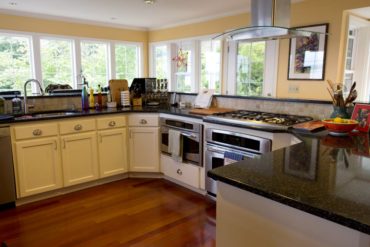 A large deck accessed from the kitchen on the west side of the home is often enjoyed for evening-sunset dinners or early-morning coffee with a view in the heat of summer. The 180-degree view allows the couple to track the sun across the Olympic Mountains range all year long.
A large deck accessed from the kitchen on the west side of the home is often enjoyed for evening-sunset dinners or early-morning coffee with a view in the heat of summer. The 180-degree view allows the couple to track the sun across the Olympic Mountains range all year long.
About an acre of the total property is in established gardens. The rest is a grassy pasture that runs downhill from the house to a white border fence a couple of hundred feet below. The grassy area requires mowing in the summer months, which Gudmunson accomplishes on a riding mower. The rest of the landscaping maintenance and gardening tasks are performed mostly by both Gudmunson and Cleghorn, with only occasional help from other workers.
“As we get older, we really have to rethink the way we garden,” Cleghorn said.
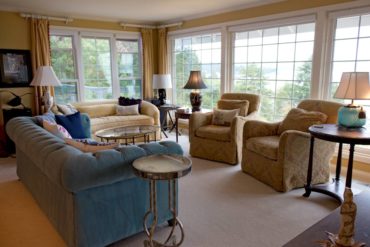 It is a problem all gardeners face as their gardens become more and more mature, and the energy and abilities of the gardeners’ wane.
It is a problem all gardeners face as their gardens become more and more mature, and the energy and abilities of the gardeners’ wane.
For the moment, however, Gudmunson and Cleghorn are content to enjoy their little piece of paradise. Comfortable in the jewel-box home they have created from a rundown little farm house, and appreciative of the expansive views of the inlet, they enjoy swimming on summer afternoons and watching the turn of the seasons in their gardens, and cannot imagine being any place else.




